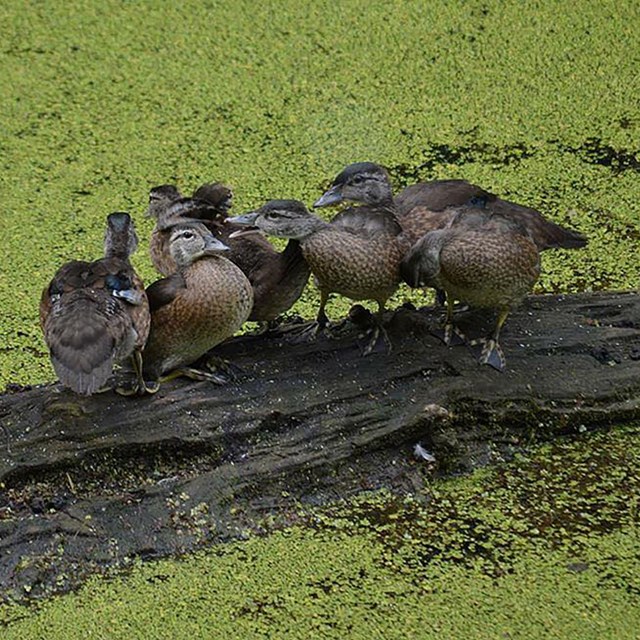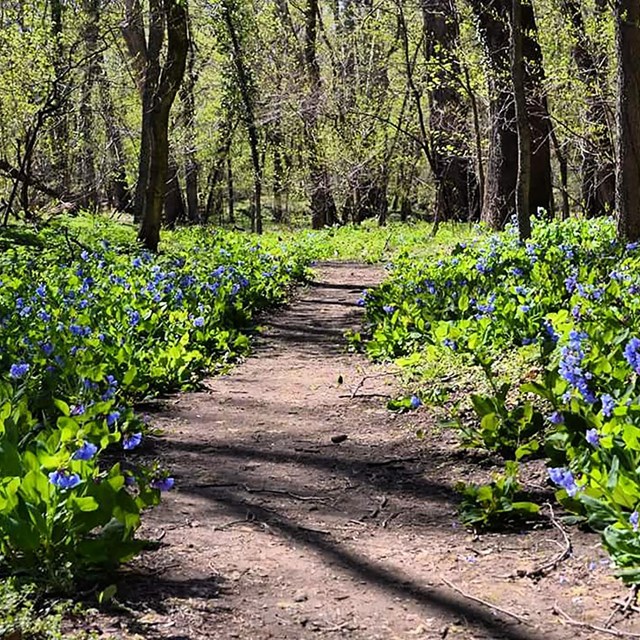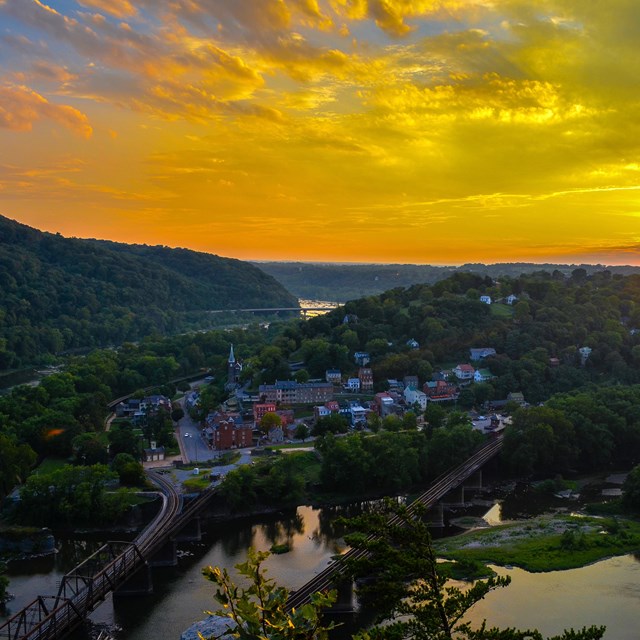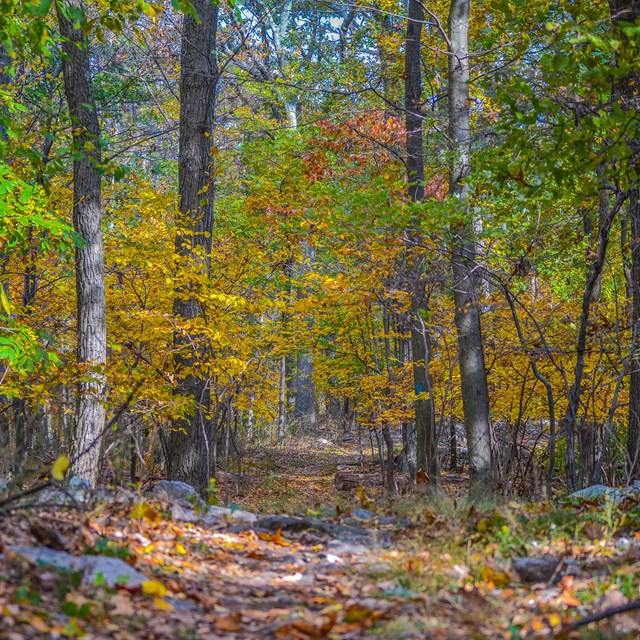|
From the rolling mountains of the Blue Ridge surrounding the historic town to the rushing waters of the Potomac and Shenandoah Rivers bordering it, Harpers Ferry National Historical Park has many natural resources to enjoy, along with its rich cultural resources.
Researching Nature at Harpers FerryHarpers Ferry is a natural oasis for visitors and for scientific researchers because of its protected natural landscape. The research done here provides the accurate and current natural resource information we need to provide to best care for the park. Scientists look at what key resources are present in the park, if they are stable or changing, how ecosystems are changing over time, and how much change is normal. Like a physician monitoring a patient's heartbeat and blood pressure, National Park Service ecologists with the National Capital Region Inventory & Monitoring Network collect long-term data on forest vegetation, bird and amphibian communities, water quality, and other key resources at Harpers Ferry, analyze the monitoring results, and share them with the park. |
Last updated: June 30, 2022




